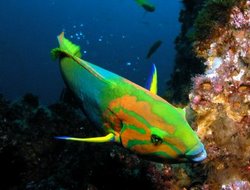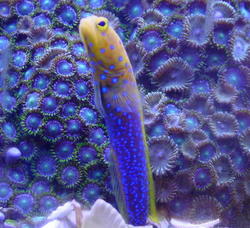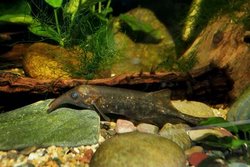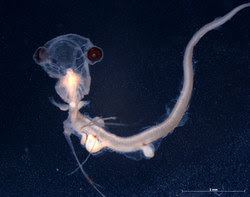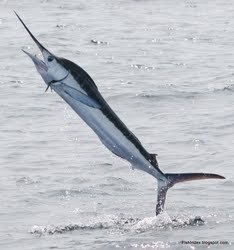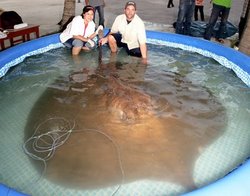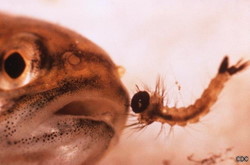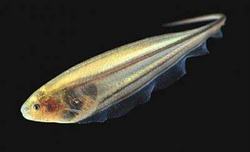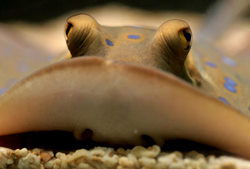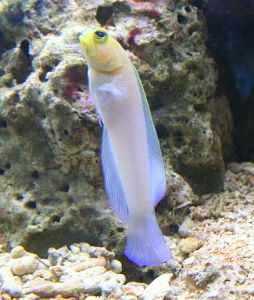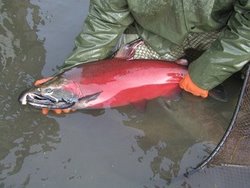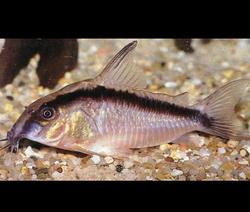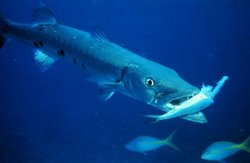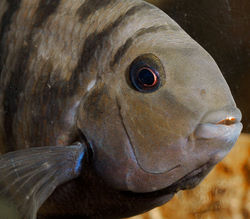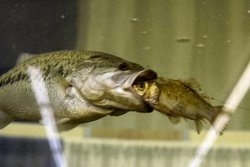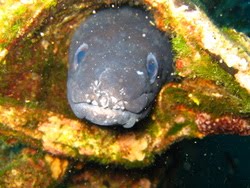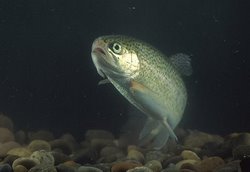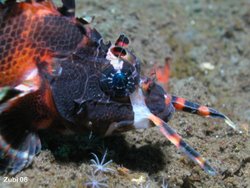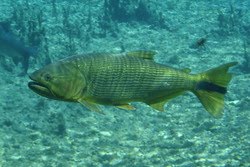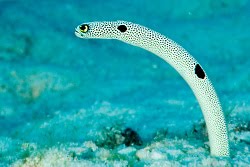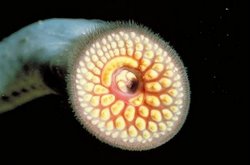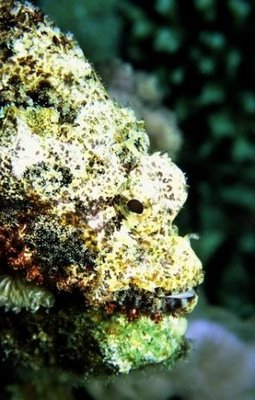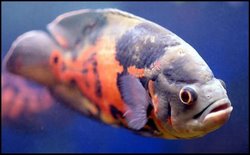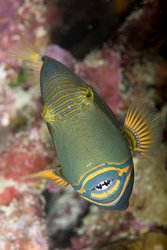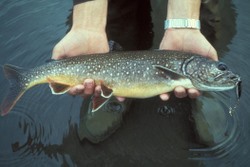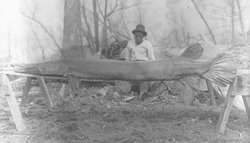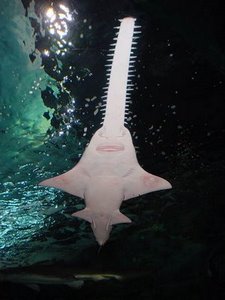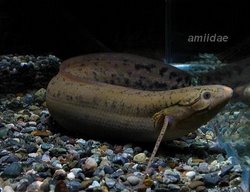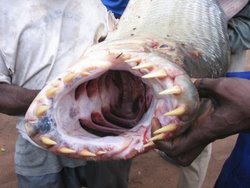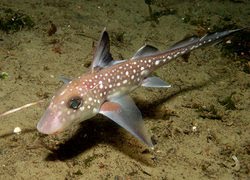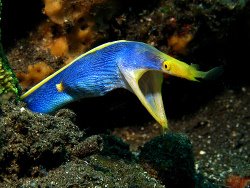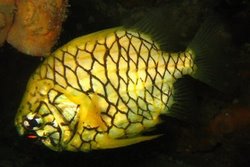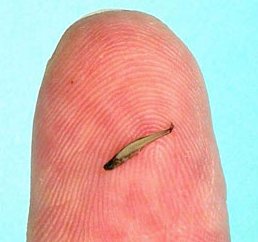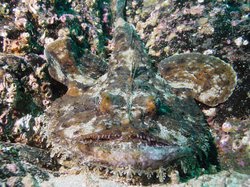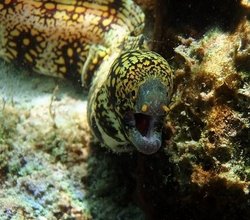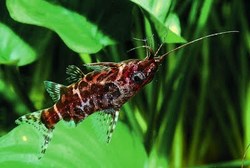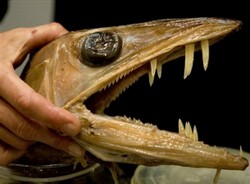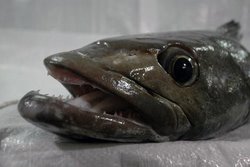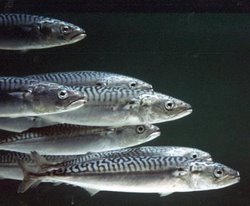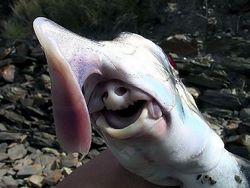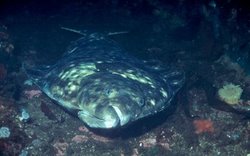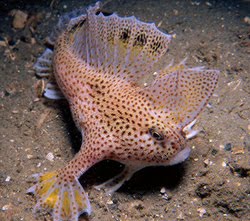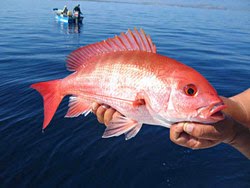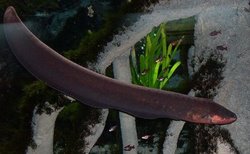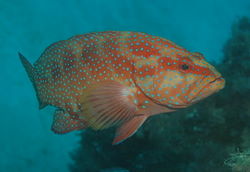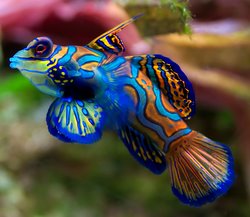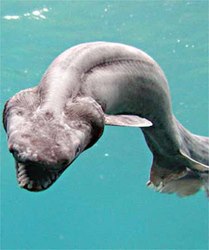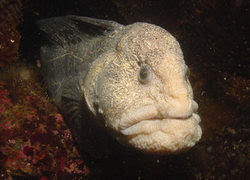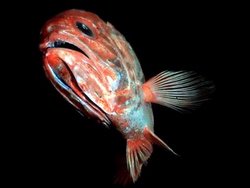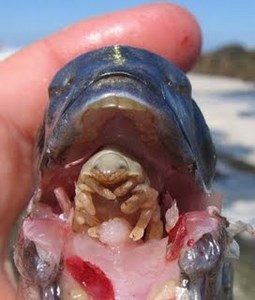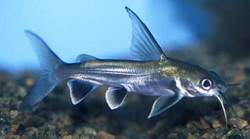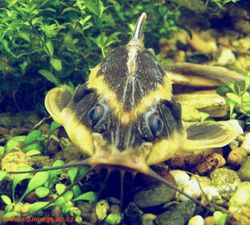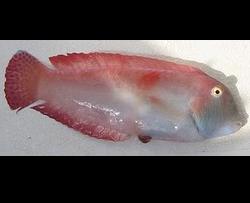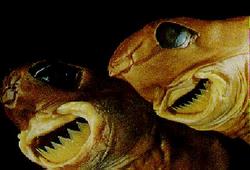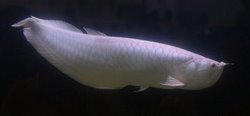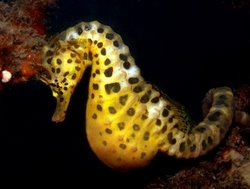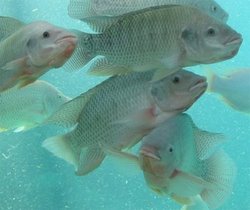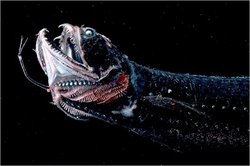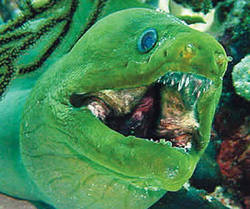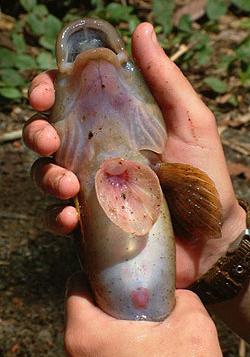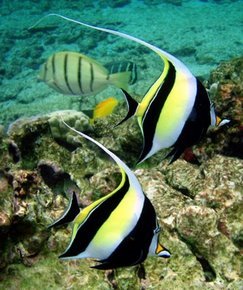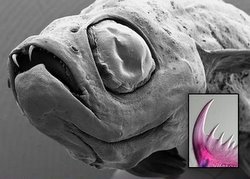The Black Drum or Pogonias cromis goes by many different names including the Sea Drum, Texas Drum, Saltwater Drum, Drumfish, Gray Drum, Striped Drum and Tambor. This saltwater fish will grow quite large, the world record Black Drum weighed in at 146lbs! These fish can be identified by their high backs and their many barbels, that are found under their lower jaw. When Black Drums are young, they have 4-5 dark vertical bars on the sides of their bodies. As the fish matures, these bars tend to fad until they are completely unnoticeable. The underbellies are normally white as they grow older. The bodies themselves can vary quite a bit in coloration. Some are light gray or silver, while others are simply black.
Black Drum are part of the Croaker family along with the Spotted Seatrout, and the Red Drum. Fish in this family get their name from the fact that they will produce a croaking of drumming sound with their air bladders. Some avid fisherman even say that they can hear the sounds from passing Black Drum fish. You can hear the noise for yourself of a Red Drum in the video below...
Spawning in the early Spring, normally in the months of February through May, these fish are free spawners. This means that they randomly release their eggs in hopes that the males will fertilize them. Once hatched these fish are quick to grow up, reaching 6" in length, in just the first year. Black Drum will feed on a variety of foods including worms, small fish, mollusks, algae and crabs. They use their barbels to find food on the bottom. They will often dig up worms and mollusks on the bottom which will leave what is called a drum noodle on the bottom. Spotting these "drum noodles" is a great way to tell if you are close to a school of these fish. Once you locate a school live bait always works best for these tasty fish!
If you have any additional fishing tips for Black Drum please leave us a comment...







